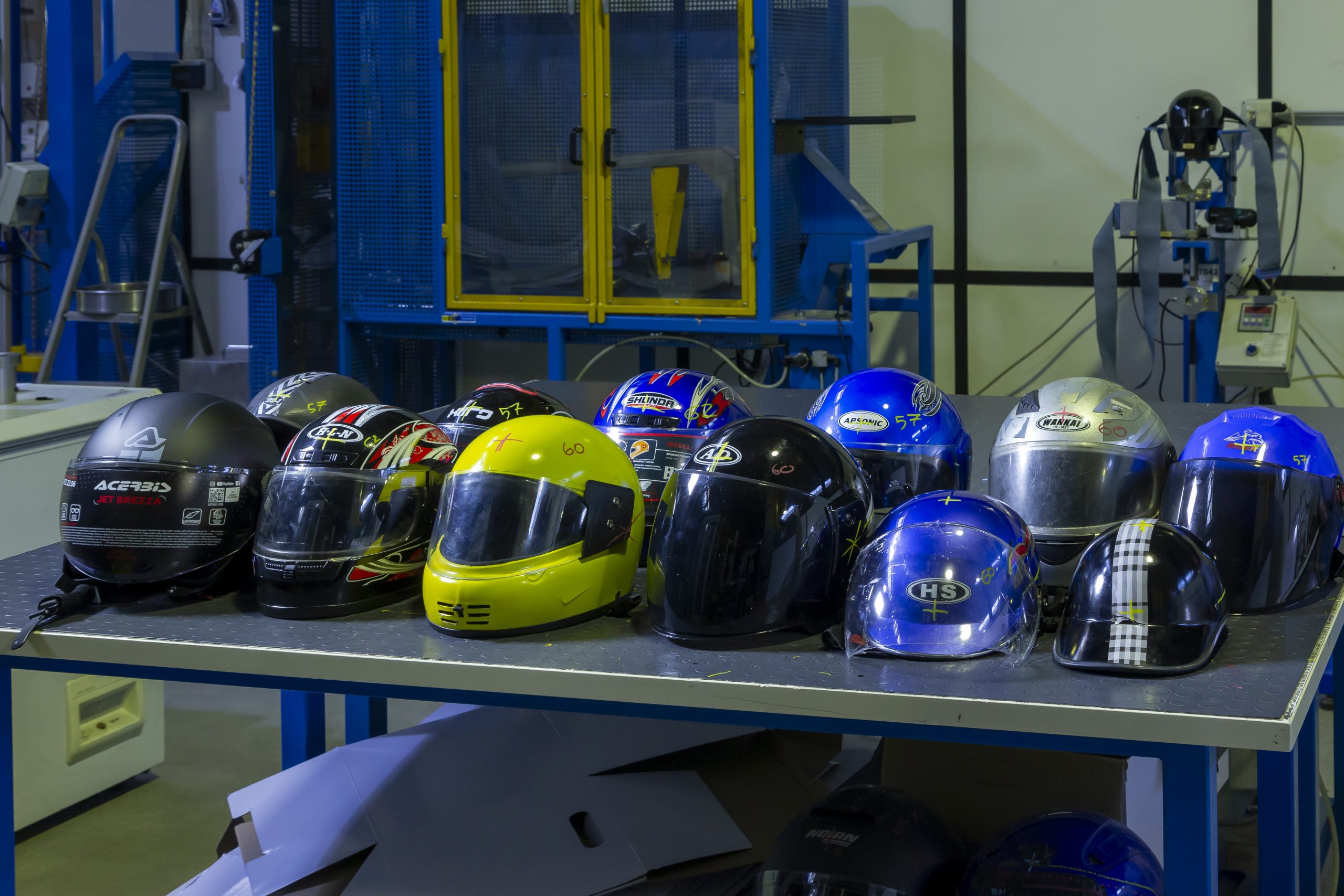
Independent testing of motorcycle helmets sourced by NGOs confirms a harsh reality: helmets that appear protective are, in fact, unsafe. People are doing the right thing by wearing helmets, but if that helmet is unsafe, they are let down when they need it most.
Motorcycle helmet test results released today by the Global Alliance of NGOs for Road Safety (the Alliance) revealed that none of the helmets tested would provide adequate protection to riders in a crash, reinforcing urgent calls to eliminate unsafe helmets from markets. The helmets were bought from local shops or given by riders to NGO members of the Alliance in Benin, Cote d’Ivoire, Ethiopia, Ghana, Greece, India, Kenya, Mexico, Nigeria, and Vietnam. They are typical of helmets commonly worn in those countries. 11 helmets from these 10 countries were taken to an accredited laboratory for testing, with funding from FIA Foundation and technical expertise from Galeatus LLC. The test results will support global and national NGO advocacy calling on governments, private sector, and other stakeholders to ensure that every helmet is a safe one.
Eight of the helmets tested originated from countries that have a specified helmet standard, highlighting the gap between regulations on paper and helmets available on the market. For helmets to be certified, they must pass all the tests required by the relevant standard. The helmets were evaluated in the laboratory against three core tests that are common to many helmet standards, including UN Regulation No.22 (ECE 22.06). They are indicative of whether the helmets will protect riders in a crash. See a description of the tests below. None of the 11 passed all three basic tests, and only one passed one of the tests, demonstrating that these helmets should not be used.
“These helmet tests show the reality of the helmets that people rely on every day, on their way to school, to work, to markets. It is unacceptable that people doing the right thing by wearing a helmet are not being protected,” said Lotte Brondum, Executive Director at the Alliance. “With our NGOs, we will use the results and the white paper as a powerful call for change: to eliminate nonstandard helmets and to advocate for laws, enforcement, and affordable, certified helmets that save lives.”
Agnieszka Krasnolucka, Programmes Director at the FIA Foundation said, “We know that substandard helmets pose a serious risk to riders by giving them a false sense of safety. Continued testing and national and global advocacy can curb this trend. The FIA Foundation is pleased to support these efforts, but as the motorcycle fleet grows, the need to replace counterfeit with certified helmets is a growing emergency.”
The helmets were exhibited at the 4th Global Ministerial Conference on Road Safety in Marrakech before being sent to the laboratory, providing an opportunity for policymakers to see and feel nonstandard helmets commonly available in their countries.
These findings reinforce the messages in the Alliance’s white paper Making Safe Helmets a Reality for All, released at the Ministerial Conference, that unsafe helmets are found even in countries with helmet standards, and that although people rely on certification labels and brands when choosing a helmet, not all helmets have them, and not all brands and labels are trustworthy.
The white paper calls on governments, manufacturers, and global stakeholders to strengthen helmet regulation, eliminate nonstandard helmets from the market, and ensure that safe helmets are accessible and affordable to all. NGOs can use the test results and white paper to expose unsafe helmets and to support governments in implementing helmet standards. They can work with manufacturers, retailers, and motorcycle transport businesses to demonstrate accountability by ceasing production, trade sales, and the use of helmets that do not meet safety standards.
More information about full test results, our white paper, and stories from riders.
Of the series of tests available, three basic tests required by many safety standards, such as the UN Regulation No.22 (ECE 22.06), were applied: